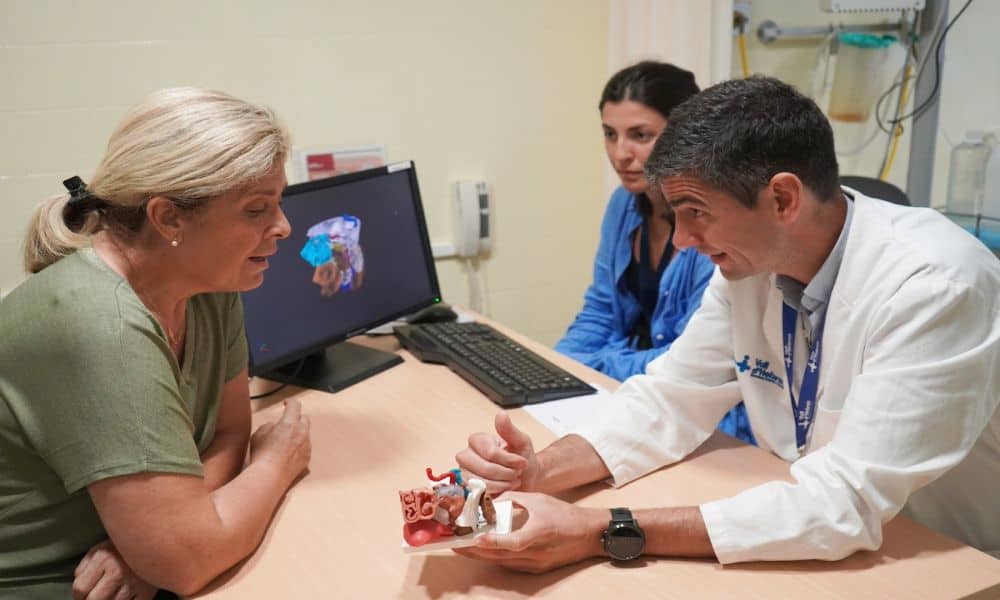
Vall d’Hebron uses robotic technology: a revolutionary procedure
Using robotic technology allows surgeons to access the brain tumor without having to make incisions in the skull. Instead, a minimally invasive approach through the body’s natural orifices is used. It is a method that significantly reduces the risk of infection, postoperative complications and bleeding. It also reduces the patient’s recovery time. This is how Dr. David Virós, head of the Head and Neck Surgery and Otorhinolaryngology Service of the center, explained it, right next to the patient Susana Zapico, 55 years old, who was operated on with this technique. It is an operation that took place twelve days ago and until today she has not yet been medically discharged, but the doctor assures that she is much better than expected. In addition, Mrs. Zapico said: “I am very happy because many things could have happened that did not happen”.
Technique allows to know in detail the structures of the area.
This medical milestone was achieved by first recreating the patient’s tumor in 3D. This means that this technique allowed them to know its interior and in detail the relationship between all the structures in the area. In addition, they were able to see the problems that could arise during the operation. The doctor also pointed out the following: “Thanks to the work of the engineers of the 3D unit we were able to plan and train the surgery, to think how we would cut and move the different structures and the steps that had to be taken at each moment.
Vall d’Hebron uses robotic technology: technique allows to know the area very well
The patient’s tumor was located at the base of the skull, near the connected nerves and blood vessels of the brain, so it was essential to know the area very well. This was in order to know the space precisely so that the surgery could be as personalized as possible. Therefore, the tumor was printed with resin pieces. It should be noted that the doctors were able to perform the operation with this Da Vinci robot surgeon, making it possible to make precise incisions in reduced spaces that are difficult to access. This robot makes it possible to observe the tumor by entering through the mouth. This avoids the doctors having to make a cut in the neck. This reduces the risk of complications and thus reduces postoperative pain.
Vall d’Hebron uses robotic technology: Surgical safety
It was also possible to dispense with tracheotomy, which is the usual procedure in this type of case. Virós also pointed out that, with this technique, there are not only improvements in surgical safety. The time of the intervention and the patient’s recovery are also reduced. Specifically, the medical team calculates that this time in the operating room can be reduced by two hours, that is to say, from four hours to two.
Representative progress in the field of neurosurgery
The advancement of this technique is a success of this procedure at Vall D’Hebron Hospital demonstrates the representative advance in the field of neurosurgery highlighting the potential of 3D and robotic technology. This with the aim of transforming the treatment of complex diseases. This innovative approach not only improves clinical outcomes, but also sets a new standard for minimally invasive surgery. Ultimately, the hospital plans to use this technique in about twenty cases per year. The hospital also plans to use it on other malignant carcinomas of the neck and head. This means that approximately fifty cases per year will be treated. So far, robotic surgery has been used in some other cases, but never in combination with 3D technology.



